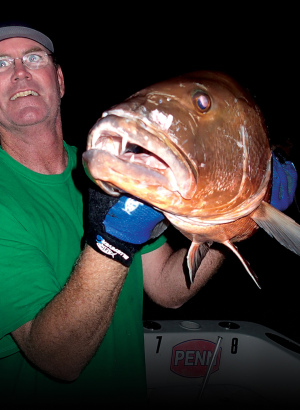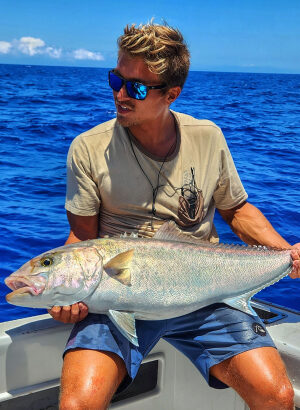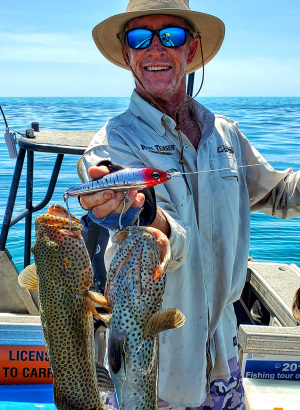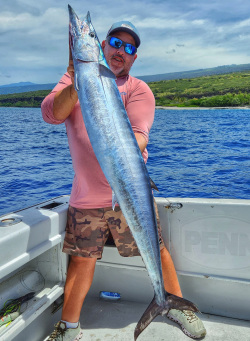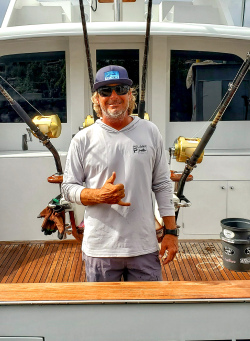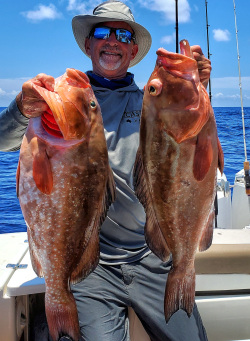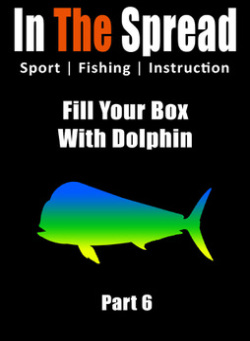Reef fishing offers diverse species, depending on depth and time of year. Captain William Toney shares valuable tips for shallow water reefs along the Gulf coast of Florida, including boating, anchoring, baiting, and finding good reefs. Listening to experienced fishers can help catch bigger fish.
Reef Fishing - Shallow Water with William Toney
(00:37:44)- Location: Florida Nature Coast
- Focus: Fishing rock piles, natural reefs, wrecks, ledges, and spring holes
- Species: Gag grouper, mangrove snapper, grunts, Sheepshead, Spanish mackerel, snapper, seabass, flounder, trout, and more
- Key Tips: Proper boat anchoring, identifying fishing spots, understanding fish migration, and using the right gear and bait
Discovering the Riches of Florida's Reefs
- Rock piles
- Natural reefs
- Wrecks
- Ledges
- Spring holes
These reefs are home to a wide variety of fish species throughout the year, such as gag grouper, mangrove snapper, grunts, Sheepshead, Spanish mackerel, seabass, flounder, and trout.
Mastering the Art of Anchoring
First and foremost, finding prime fishing spots is crucial. Capt. Toney shares his knowledge on how to locate productive reefs, ledges, and wrecks using a combination of charts, local knowledge, and keen observation skills. Once you've found a promising spot, anchoring your boat correctly is essential to maximize your chances of success.
Capt. Toney demonstrates anchoring techniques that allow anglers to maximize their space and target multiple species simultaneously. By positioning your boat strategically, you can cast your lines in different directions, covering a wider area and increasing your odds of catching a variety of fish species.
Another important factor to consider when anchoring is the tide and current. Capt. Toney explains how to adapt your anchoring approach based on these conditions to ensure that your boat remains stable and in the optimal position for fishing. By taking into account the direction and strength of the current, you can fine-tune your anchoring technique to maintain the perfect distance from the reef or structure you're targeting.
Mastering the art of anchoring is a critical component of successful reef fishing. By following Capt. Toney's expert advice on finding prime fishing spots, maximizing angler space, targeting multiple species, and adapting to changing conditions, you'll be well on your way to enjoying a productive and rewarding fishing experience on Florida's shallow water reefs.
- Finding prime fishing spots
- Anchoring techniques to maximize angler space
- Targeting multiple species simultaneously
- Adapting anchoring based on tide and current
Anchoring is an essential skill for reef fishing and really any boater should know how to anchor. By mastering the art of anchoring, you can ensure that your fishing day will be far more productive.
Capt. William ToneyLocating Hidden Fishing Spots
One of the best ways to find these hidden spots is to venture out on calm days and keep a sharp eye out for yellow patches in the water. These patches can indicate the presence of underwater structures like reefs, wrecks, or rock piles that attract fish. When you spot a promising area, take the time to investigate further and confirm if there is indeed a structure beneath the surface.
Another telltale sign of an underwater structure is the presence of marine life, such as turtles. Turtles often congregate around reefs and wrecks, so if you spot one, it's worth exploring the area more closely.
Capt. Toney emphasizes that sometimes a small, inconspicuous rock might be more productive than a well-known, popular wreck. The key is to find locations that are not heavily fished and are known to fewer anglers. These hidden gems can often yield impressive catches, as the fish in these areas are less pressured and more likely to bite.
When searching for hidden fishing spots, it's essential to keep an open mind and be willing to explore. Some of my most memorable catches have come from unassuming locations that I discovered by simply keeping my eyes peeled and investigating promising areas.
By following Capt. Toney's advice and dedicating some time to exploring and investigating potential fishing spots, you can uncover hidden gems that can take your reef fishing experience to the next level. Remember, it's all about location and finding those secret spots that other anglers might overlook. With a little patience and perseverance, you can discover your own productive fishing grounds and enjoy the thrill of landing an impressive catch from a spot that's all your own.
- Venture out on calm days and look for yellow patches in the water
- Investigate these patches to confirm if they're structures
- Observe signs of underwater structures, such as spotting a turtle
Remember, sometimes a small rock might be more productive than a popular wreck. It's all about location and how many anglers are aware of the spot.
Following the Seasonal Migration of Florida Reef Fish
- Mangrove Snapper
- Spanish Mackerel
- Gag Grouper
Spanish mackerel, another highly-prized species, are known for their lightning-fast runs and aerial acrobatics. Capt. Toney reveals that these fish are most active during the spring and fall months when they migrate along the Florida coast in search of baitfish. He provides insights on how to locate schools of Spanish mackerel, the best lures and baits to use, and how to handle these high-energy fish once they're hooked.
Gag grouper, the heavyweight champions of the reef, are a favorite among anglers looking for a challenging fight and a tasty meal. Capt. Toney shares his knowledge on the seasonal migration patterns of gag grouper, noting that they are most commonly found in deeper waters during the cooler months and move to shallower reefs as the water warms up. He offers advice on how to target these powerful fish using heavy tackle and live bait, and how to safely handle and release them if you're practicing catch-and-release.
The Homosassa area in the Florida Nature Coast is a particularly productive region for reef fishing, thanks to its abundance of spring holes, wrecks, ledges, and reefs. Capt. Toney shares an interesting fact about this area, noting that the average water depth increases by only 1 foot per mile as you move away from shore. This gradual slope creates an ideal environment for reef fish, making the Florida Big Bend area a prime destination for those targeting depths of 8 to 12 feet.
Understanding the seasonal migration patterns of the fish you're targeting is key to a successful reef fishing trip. By knowing when and where to find these species, you can maximize your chances of landing a trophy catch and enjoy a memorable day on the water.
By following Capt. Toney's expert advice on the seasonal migration patterns of mangrove snapper, Spanish mackerel, and gag grouper, and by focusing your efforts on the productive waters of the Florida Nature Coast, you'll be well-equipped to plan a successful reef fishing adventure. Remember to stay attuned to the changing seasons and the movement of your target species, and you'll be rewarded with unforgettable catches and cherished memories on the water.
Gear and Tackle Insights
Capt. Toney also shares his expertise on the best gear and tackle for reef fishing:
- Light Wire vs Fluorocarbon: When targeting Spanish Mackerel, it's essential to note that they have keen eyesight. A thicker line might deter them from biting.
- Bait: Live bait, especially live shrimp, is highly recommended. Learn the best ways to hook a live shrimp for optimal results.
- Chum Bag: Understand the benefits of using a chum bag in tandem with bait.
- Catch and Release: Sometimes, it's best not to pull a fish out of the water immediately after catching it.
Whether you're looking to teach a young angler, fill your cooler, or simply enjoy the thrill of the catch, reef fishing in Florida's shallow waters offers a multitude of experiences. Join Capt. William Toney as he discusses tackle, techniques, and other essential tips to make your next fishing trip a success.
How do I find fishing spots?
Charts marking reefs are a good starting point. Some are available online, while others can be accessed through specific services. Alternatively, calm days are perfect for spotting yellow patches in the water, which can indicate potential fishing spots.
What indicates an underwater structure?
Turtles are often a sign of an underwater structure. Additionally, yellow patches in the water can also indicate potential spots.
What type of bait should I use for reef fishing?
Live bait, particularly live shrimp, is highly recommended for reef fishing. However, artificial lures can also be effective, especially when targeting species like Spanish mackerel.
User Reviews
There are no reviews yet.Captain William Toney
Captain William Toney, a Florida native, is a fourth-generation fishing guide known for his expertise in Redfish, Sea Trout, Mangrove Snapper, Snook and other fish species. He is a licensed and insured guide, a Homosassa Guide's Association member, and hosts 'In The Spread', an online fishing instruction platform. Toney's expertise in redfish, tides, and bait presentation is unparalleled, and he shares his knowledge on seasonal fish migration patterns and tidal flows. His dedication to passing on his knowledge to younger generations is invaluable.
Read more
